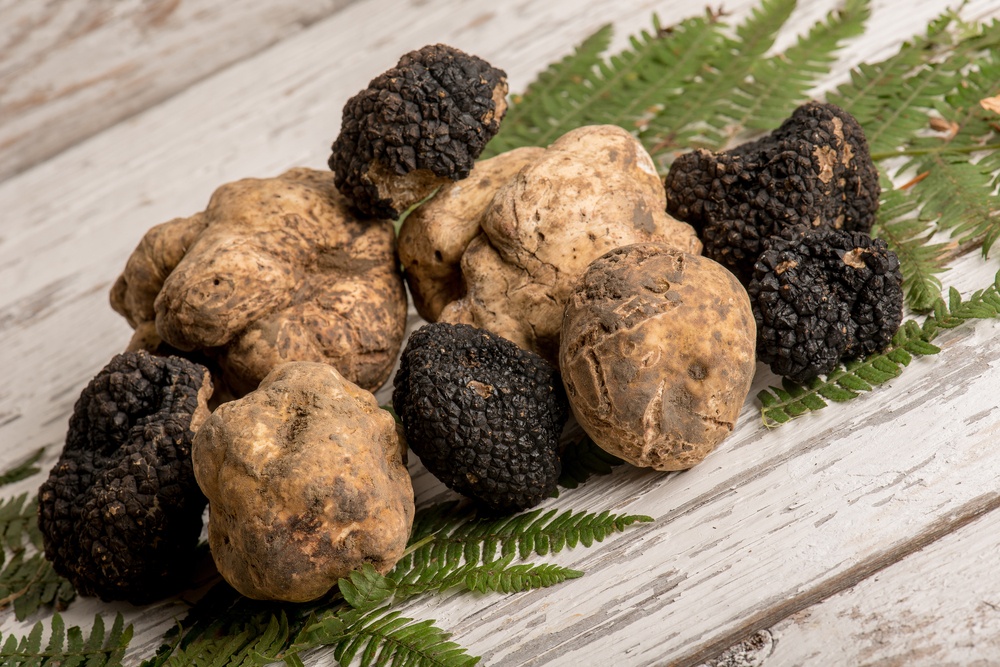Uncategorized
Mushroom Truffles
What Are Truffles?
Truffles are the fruiting body of ascomycete fungus. This is a subterranean fungus that is part of the genus Tuber. The name truffle derives from the Latin word “tufer,” meaning “lump.” Types of fungi that can also be classified as truffles include the genera Leucangium, Choiromyces, and Peziza, among hundreds of others. Edible truffles are highly regarded in French, Italian, Spanish, and Middle Eastern cuisine mushroom truffle.
Where Do Truffles Come From?
The lure and lore of truffles—with their supposed aphrodisiacal properties and their bold flavor—can be traced back to ancient times. Inscriptions from Neo-Sumerians in fourth-century BC describe truffles as being part of the diets of the nomadic Amorites. There’s a record of Babylonians foraging for truffles mushroom truffle. The rich fungi graced the tables of Greek and Roman rulers. Grecian philosopher Plutarch of Chaperone believed that truffles were created by a thunderbolt, thrown by the God Zeus, striking an oak tree on Earth mushroom truffle pasta toronto .
How Are Truffles Grown and Harvested?
While truffles are not produced by a thunderbolt striking an oak tree, they do grow underground in the shadow of oak trees. They can also grow beneath hazel, fir, or beech trees. Truffles play an important role in the host tree’s root system; the trees and fungi form a symbiotic relationship called “mycorrhizae mushroom truffle .”
Truffles grow in lime-rich soils. They’re mainly found in Europe but can also grow in North Africa, the Middle East, and in North America. They’re collected with the help of truffle-hunters: female pigs and trained dogs that are able to detect the scent of truffles beneath the forest floor truffles for sale ireland .
Truffles can be cultivated. However, maintaining the soil conditions and waiting for the mycorrhizae process, which can take 7-10 years, makes cultivating truffles difficult. Successful production of truffles has been achieved in parts of Australia and New Zealand. In the United States, there are truffles farms in Oregon, North Carolina, Arizona, and Tennessee mushroom truffle .
What Are the Characteristics of Truffles?
Truffles look like lumpy potatoes. They are typically 30-60 grams in size. Truffles have a singular taste that can be described as earthy—similar to mushrooms or autumn leaves. They have a musky, pungent aroma and can range in color, from sandy white to dark brown, depending on the type of truffle and its host tree buy truffles canada .
Truffles are rich in nutrients, including calcium, iron, sodium, vitamin C, manganese, and phosphorus. They’re also a good source of carbs, protein, and fiber—the amount varies by type. Truffles are also high in antioxidants such as vitamin C, homogentisic acid, and gallic acid, which are anti-inflammatory mushroom truffle . They contain both unsaturated and saturated fatty acids.
3 Different Types of Truffles
Different types of truffles grow in different parts of the world mushroom truffle. The two most common types of truffles are black truffles and white truffles.
- White truffle. Tuber magnatum pico, or white truffles, have a yellowish outer casing and flavor notes of garlic and cheese. They are found in southern Europe, most famously in the Piedmont region of Italy. The city of Alba and its surrounding countryside is known for producing flavorful white truffles. The tartufo bianco pregiato is another prized white truffle, found in Tuscany. For an inspired recipe idea using white truffles mushroom truffle , check out Gordon Ramsay’s chicken supreme and pan sauce with optional white truffle here.
- Black truffle. The species Tuber melanosporum is also known as French black truffles or Périgord truffles. The most prized are found in the Périgord region of France. The truffles have a dark, bumpy outer skin. These have an aromatic scent—less pungent than other truffles—and a mild flavor.
- Burgundy truffle. Tuber aestivum are a type of black truffle known as burgundy truffles. These truffles have an aroma of hazelnuts and mushrooms. The skin of the truffle is dark brown and covered in pyramid-shaped bumps. Depending on the time of year they’re harvested, burgundy truffles can also be called summer truffles—the amount of time spent underground before harvest affects the strength of the flavor. Summer truffles are milder mushroom truffle .
Why Are Truffles Considered a Delicacy?
There are a few reasons that truffles are considered a delicacy and have been dubbed “edible gold.”
- Some types of truffles can cost thousands of dollars per pound. The long process of cultivating a relationship between host trees and fungi, the specific soil and environmental conditions required to support production, and the process of foraging for truffles all account for the preciousness—and high price—of truffles mushroom truffle .
- Truffles are not plants or animals—they’re underground mushrooms in the fungi kingdom. The part of the truffle that most people see looks like a small, lumpy potato. This is the part of the fungus that creates spores for reproduction, just like a typical aboveground mushroom. Truffles also send out an extensive system of rootlike filaments called hyphae that interact with plants. mushroom truffle and trees face a dilemma. The hyphae of truffles are exceptional absorbers of water and nutrients, but they can’t photosynthesize sugar for food buy truffles australia . Trees, on the other hand, have lots of photosynthesizing leaves that allow them to create their own food, but they’re not always the best at soaking up water and nutrients. Somewhere in the evolutionary scheme of things, truffles and trees began to take advantage of each other’s strengths. The hyphae of truffles latched onto the roots of trees to create symbiotic relationships called mycorrhizae. The truffle provides the tree with extra water and nutrient absorption, and the tree gives the truffle sugar in return.



Pingback: Mushroom truffle Best quality truffles online